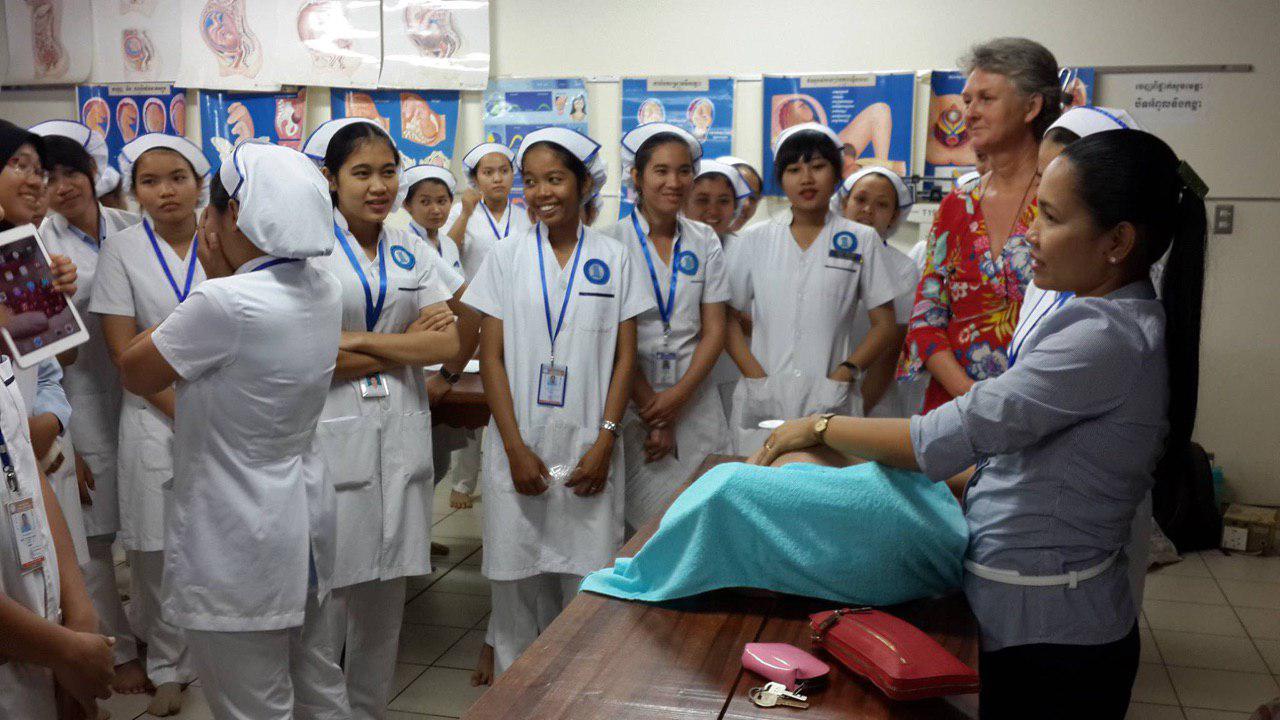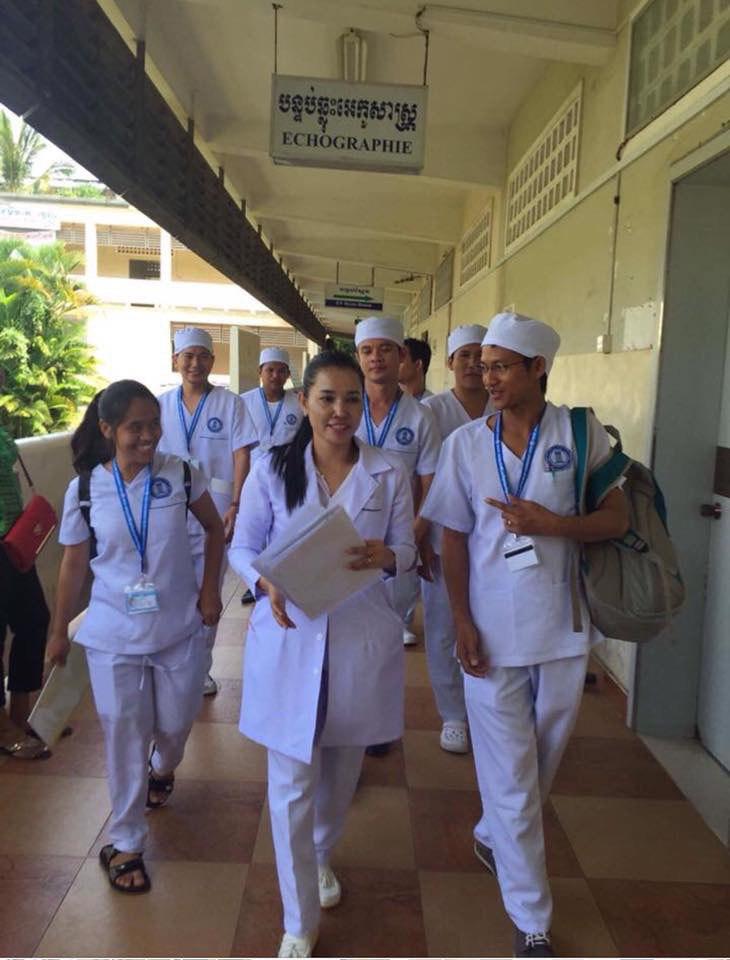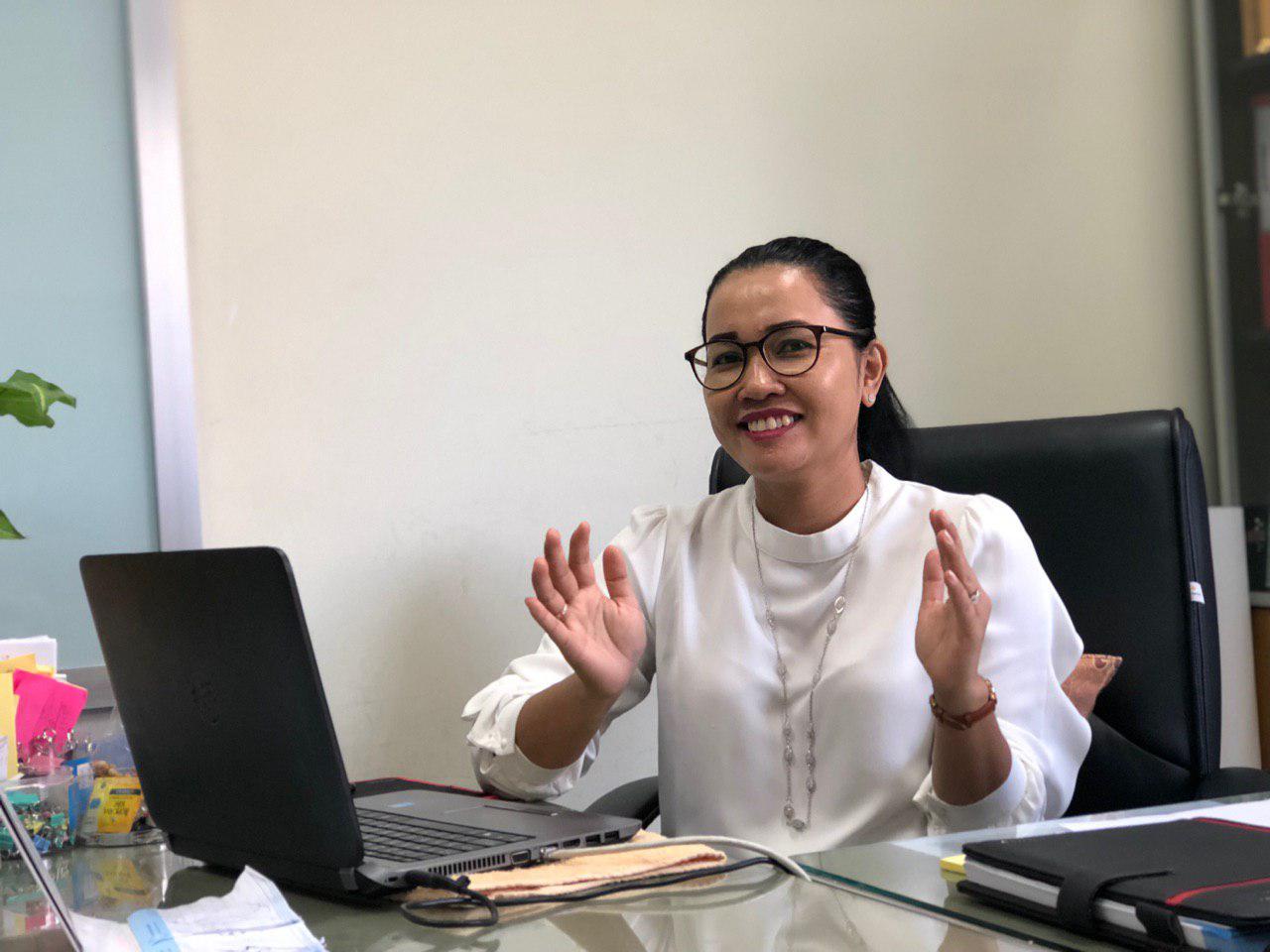As a bright morning wears on, Preab Dary, 42, is working with a cohort of nursing and midwifery students at Cambodia’s leading public medical training institution.
“Teaching here gives me a tremendous sense of accomplishment, although it takes a great deal of time and energy,” said Dary, swelling with pride as she describes developments in health workforce training since the early 2000s when she took an associate degree in midwifery.
Now also specialized in nursing, Dary is among few instructors who hold a master’s degree, while most of the university’s nearly 1,800 teachers and trainers now have at least a bachelor’s degree.
“Fifteen years ago, we did not have teachers with minimum academic qualifications or skills necessary to teach. For example, associate degree teachers taught associate degree students,” added Dary.

Transforming health professional education towards a competency-based curriculum will be a key component of the Ministry of Health’s next health workforce development plan. It means that Cambodia will join other lower-middle income countries in building locally relevant health worker competencies that align with population health needs. Strengthening the training and skills of educators is needed to support this shift, requiring greater resources, technical assistance and coordination.
Future health challenges
Cambodia is undergoing rapid demographic, epidemiological, social, economic and environmental transitions that are impacting health. Economic growth has resulted in increased urbanization, air pollution, more sedentary lifestyles and dietary changes.
Currently, non-communicable diseases are estimated to account for 64% of all deaths, with cardiovascular diseases among the top causes of premature mortality. With a growing ageing population that is estimated to account for 21% of the population by 2050, these numbers are projected to rise.
Tackling future population needs and managing the growing expectations of people of what health services should offer will require greater investment in expanding and transforming the health workforce, particularly at the primary care level where the majority of health needs people encounter throughout their lives can be addressed.
A new health workforce plan

Previous health workforce plans have been limited in scope, focused on current health sector needs and challenges, rather than looking at the future and considering linkages with other sectors such as labour, education and finance.
“By anticipating the changes in skills and competencies required to tackle Cambodia’s evolving health needs, we can start preparing Cambodia’s health workforce now to be fit for the future.” said Dr Li Ailan, WHO Representative in Cambodia.
“We can also generate evidence and data on the health workforce that can help different sectors to understand how the health sector is a key economic and employment sector for development in Cambodia, and not just a cost to be borne,” added Dr Li.
As a part of this work, WHO Cambodia welcomed a joint WHO and International Labour Organization (ILO) team from headquarters, regional and country offices to participate in a week-long mission in September 2019 to assist with health workforce planning for the future. The mission culminated with a consultative meeting on health workforce priorities jointly organized by WHO and ILO, which was attended by government ministries, education and training institutions, professional associations, health professions councils, development partners and the private sector.
“At the meeting I was able to express my concerns and share ideas as an educator and practicing nurse, especially with those who might not be familiar with the advancements in education that have been made in recent years. For example, we now use student-centred methods of teaching and competency-based assessments which are preparing our graduates well for practice,” said Dary.

Next steps
Transforming the health workforce, and ensuring decent employment, is key to transforming Cambodia’s health system to meet population health needs and for advancing universal health coverage. The vision and perspectives shared during the health workforce mission will help to inform the development of the Fourth Health Workforce Development Plan, which is expected to be launched in 2021.
Dary sees a brighter future for Cambodia’s health workforce in the next decade, which she hopes to see included in the next health workforce plan.
“We very much support efforts like the consultative meeting and hope to see life-long learning for health workers, including inter-professional training, with greater attention to recruitment and training of preceptors and a focus on people-centred care, particularly prevention and health promotion to address the growing burden of non-communicable diseases,” explained Dary.
To support the development of a more robust health workforce plan, the Ministry of Health is receiving technical assistance through the China-UN Peace and Development Fund’s WHO-led Working for Health: Cambodia, Kyrgyzstan, Nepal, Sri Lanka project, which is guided by the recommendations of the UN High-Level Commission on Health Employment and Economic Growth (2016) and the joint ILO-OECD-WHO Working for Health Programme.
